Lavender, with its delightful fragrance and lovely bloom, is a garden favorite, renowned for its resilience and easy maintenance. However, one common issue gardeners often face with lavender plants is woodiness – a state where the plant becomes overly woody with sparse foliage and limited blooms. This often occurs when the plant is not regularly pruned, making it less attractive and less productive. Pruning woody lavender may seem challenging, but with the right tools and understanding, it can be done effectively to revive your lavender plant to its former glory. In this guide, we’ll show you how to prune woody lavender.
Sign of Woody Lavender
The primary sign of a lavender plant becoming woody is a noticeable change in its physical appearance. The lavender’s base develops a thick, wooden structure, and the plant becomes leggy, with long stems sprouting from a central point. These stems may have fewer leaves and flowers, and they can appear sparse and elongated compared to a healthy plant. The foliage and blooms may also appear mainly at the tips of these long stems, leaving a bare, woody base. This growth pattern is more common in older lavender plants and can be expected after several years of growth. It’s an indication that the plant is mature and may require more rigorous pruning or even replacement.

Ultimately, woody lavender can be a sign that your plant is reaching the end of its life cycle. If this is the case for your plant, it’s best to replace it with a new one and start fresh. With the right care and attention, you’ll soon have a flourishing lavender bush in your garden! [2]
Tools for Pruning Woody Lavender
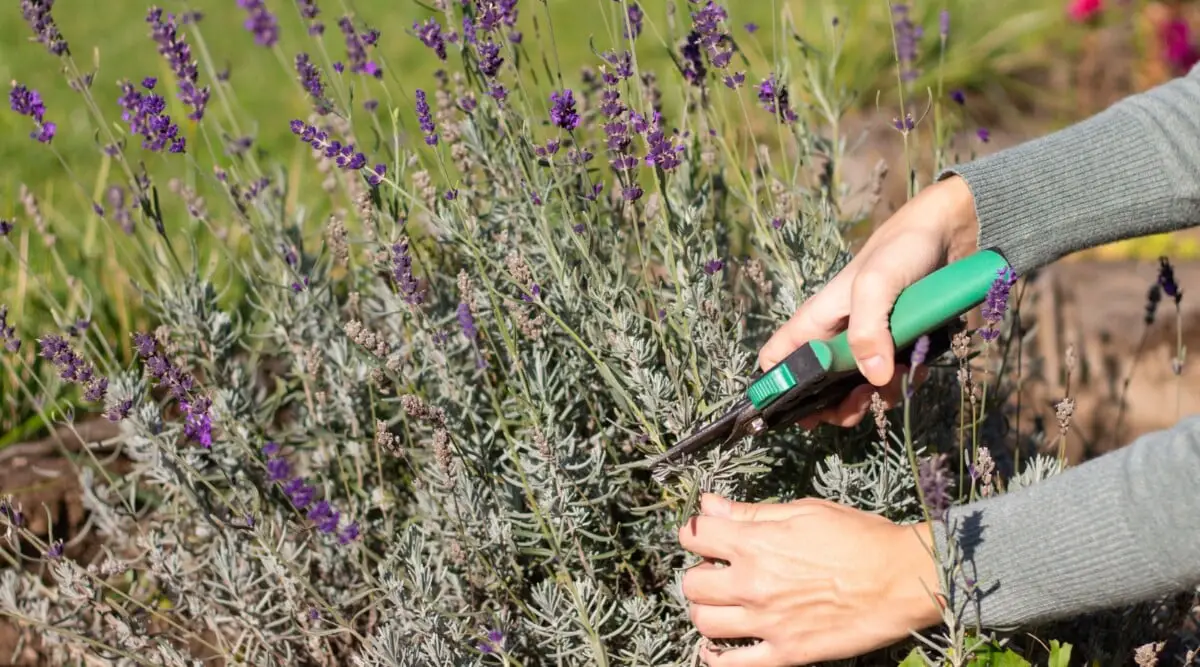
The first step in pruning woody lavender is to get the right tools. You will need a pair of sharp garden shears or bypass pruners and long-handled loppers to cut thick stems. Make sure they are well maintained, with clean and sharp blades that make precise cuts. Additionally, you should also have a ladder, gloves, and eye protection to ensure your safety.
Before Pruning: Assessing the Plant
Before you start pruning, assess the plant first for any potential disease or pest issues. Look out for signs of damage such as discoloration in leaves, wilting stems, and fungal growth. If you find any of these, take a sample to your local garden center for identification and treatment.
Tips for Pruning Lavender in Spring
Spring is the ideal time to prune your lavender, as new growth just starts to appear. Begin by removing any dead or damaged wood. This is crucial because dead wood can harbor diseases and pests. However, be careful not to cut into the old wood as it is unlikely to produce new shoots.
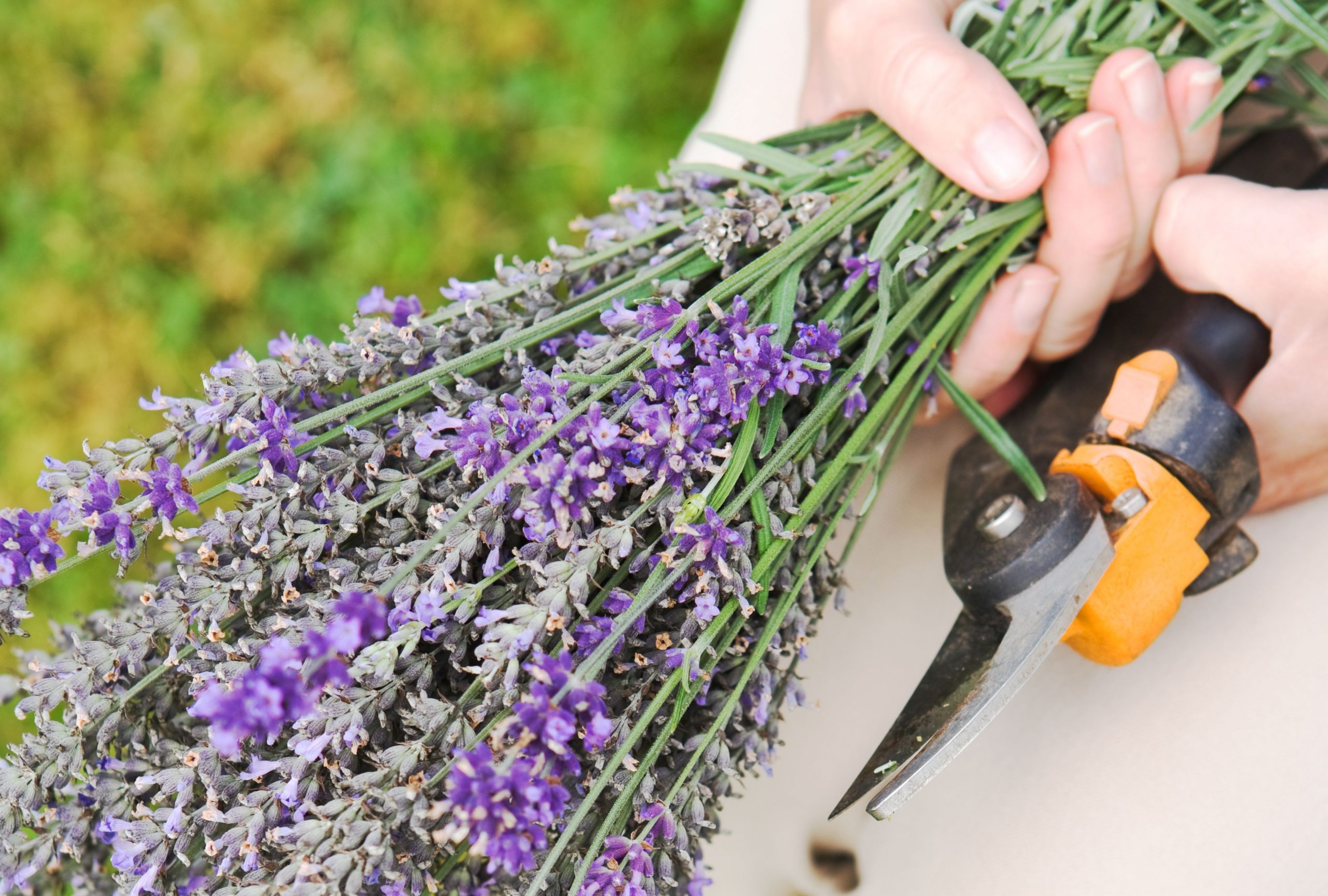
Next, trim back the previous year’s growth by about one-third. Make your cuts just above a node, the point on a stem where leaves or buds grow. This will encourage the plant to produce dense, bushy growth that will result in more blooms.
Finally, after pruning, give your lavender a boost by applying a slow-release granular fertilizer. This will help the plant recover faster and produce abundant, fragrant blooms. Remember, pruning is not a one-time event but a regular part of lavender care. With consistent care, your lavender plant will remain healthy and vibrant, filling your garden with its delightful scent.
Always remember to clean your tools after pruning to prevent the spread of disease. Regular maintenance of your lavender will keep it looking its best and ensure a plentiful supply of flowers for years to come.[4]
Tips for Pruning Lavender in the Fall
Pruning lavender in the fall is slightly different than in the spring, but just as important for maintaining the health and vitality of your plant.
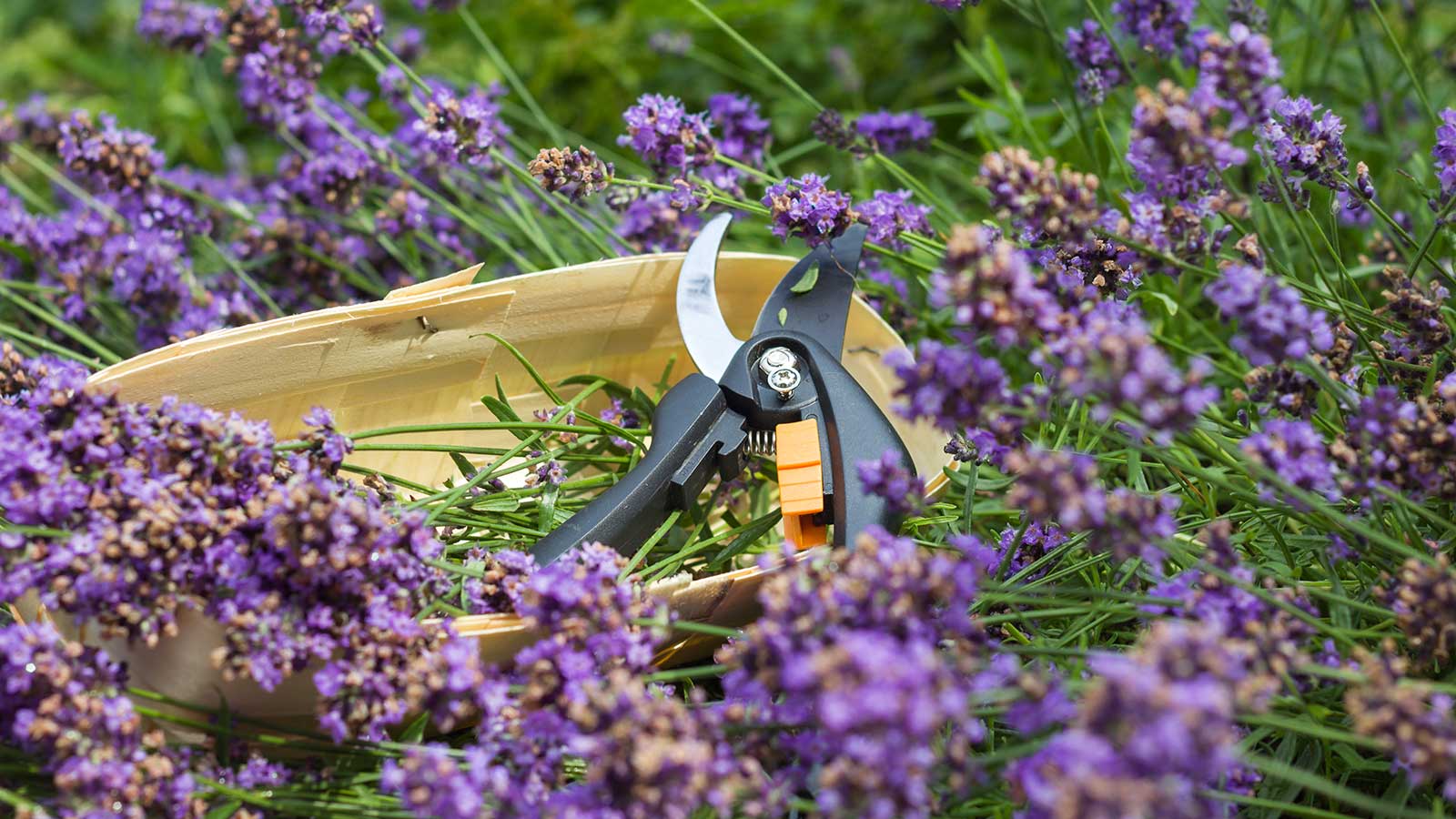
Start by removing any spent flower stalks – these are stalks that have finished blooming. This will help prevent the plant from diverting energy into seed production and encourage more blooms in the future.
Like in spring, cut back the previous year’s growth by about one-third, ensuring that you are not cutting into any old wood – since older branches are unlikely to sprout new growth. Make sure to make your cuts above a node where leaves or buds emerge.
Avoid heavy pruning in the fall. As lavender is a semi-shrub, the old wood provides protection for the plant over the winter and is the foundation for next year’s blooms.
In colder zones, consider applying mulch around the base of the lavender after pruning to provide extra protection from harsh winter weather. Use a light, well-draining material like straw to avoid water retention which can cause root rot.
Lastly, refrain from feeding your lavender plant in the fall. Unlike in the spring, we don’t want to encourage new growth at this time because tender new shoots could be damaged by winter frost.
Pruning your lavender is an important part of its care that will help keep it healthy and productive. Whether you are pruning in the spring or fall, the key is to be gentle and consistent with your maintenance. With proper pruning, your lavender can thrive and provide abundant blooms for years to come.
What to do with woody lavender stems?

After pruning your lavender, you may find yourself with a pile of woody lavender stems. These stems are far from waste – they can be put to good use in various ways.
- Use them as fire starters: The woody stems of lavender are highly fragrant and burn well, making them ideal for use as natural fire starters.
- Create a lavender-infused oil: Place the woody stems in a jar of olive oil or another carrier oil, let it sit for a few weeks, and you’ll have a beautifully fragrant lavender-infused oil.
- Craft a homemade potpourri: Dry the stems and mix them with other dried flowers and spices to create your personal homemade potpourri.
- Make a rustic wreath: With some floral wire and a little bit of creativity, you can twist and turn these woody stems into a rustic wreath for your front door or living area.
- Compost them: If none of the above appeal to you, composting is always a good option. The woody stems will break down over time, contributing to rich compost that will benefit other plants in your garden.
Always remember, every part of the lavender plant can be put to use. It’s not just about the beautiful blooms and fragrant leaves – even the woody stems can bring value and utility.[1]
How do you prune leggy lavender?
Pruning leggy lavender requires a slightly different approach, but it can be done effectively with patience and the right techniques. Start by identifying the leggy or elongated part of the lavender plant. The extended, bare branches with less foliage are the leggy parts that need to be pruned.
Trim back the leggy lavender during early spring, just before new growth begins. Start by eliminating any dead, damaged, or diseased wood. Then, focus on the leggy branches. Prune these branches, reducing their length by approximately one-third to half, making the cuts just above a node where leaves or buds emerge. Avoid cutting the woody base of the plant, as this can potentially harm the lavender.
However, if your lavender is extremely leggy and overgrown, you may need to cut more drastically. In this case, it’s crucial to ensure some foliage is left on each stem, as this will allow the plant to photosynthesize and recover.
Once you have completed pruning, it is recommended to apply a slow-release granular fertilizer to give the plant a boost and help it recover faster. Regular pruning and care can help rejuvenate leggy lavender over time, encouraging it to grow more dense and bushy.
Remember, it’s always better to under-prune than over-prune, as excessive pruning can stress the plant. If your lavender is extremely leggy and pruning doesn’t seem to help, it may be time to replace the plant.
Can lavender be pruned too aggressively
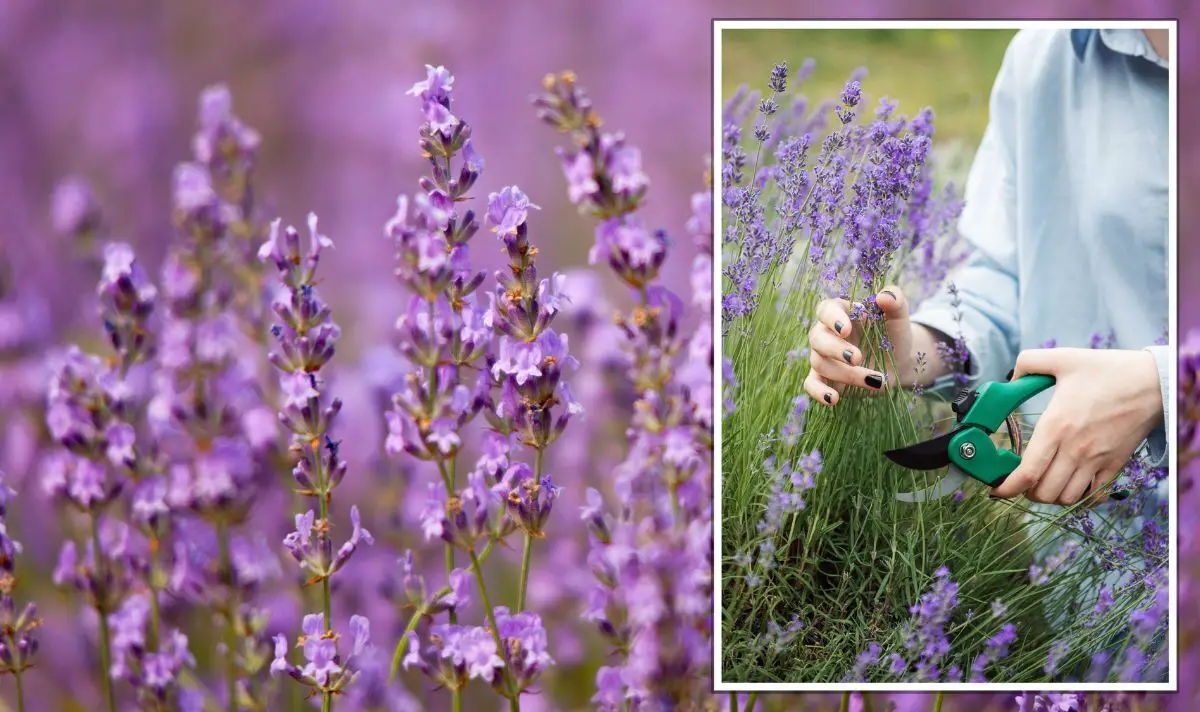
Yes, lavender can indeed be pruned too aggressively. While pruning is necessary for the plant’s health and to encourage blooming, over-pruning can harm the lavender. Cutting too deep into the woody part of the plant can cause the stems to stop producing new growth. If you prune back too much at once, you could also shock the plant, stunting its growth or even causing it to die. This is why it’s essential to approach pruning with a moderate, careful approach, removing only about one-third of the plant’s mass each time. Over time, regular, proper pruning will encourage the lavender to grow fuller and healthier, without the risk of harming the plant.
In addition to pruning correctly, you must also ensure the lavender is given proper care and attention. This includes providing adequate light, water, and fertilizer in order to keep your lavender healthy and thriving. With a little extra TLC, you can enjoy beautiful blooms from your lavender plant year after year. [2]
What are the benefits of pruning lavender?
Pruning your lavender regularly has numerous benefits. It encourages a healthy growth pattern and maintains an attractive, bushy form. Pruning also helps to keep the plant from becoming woody and leggy, as well as promoting new flower production by stimulating fresh bud growth. Regular pruning will help to ensure that your lavender remains healthy and fragrant, while also preventing it from becoming overgrown. Pruning also helps to minimize pest infestations by keeping the foliage trimmed and removing old or diseased woody parts.
Lastly, pruning is an essential step in propagating lavender. It’s much easier to take cuttings from a well-pruned plant than from an unpruned one. Trimmed cuttings root much faster and are more likely to grow into healthy plants. So if you’re looking to propagate your lavender, pruning is a must! [5]
FAQ
Is it necessary to prune woody lavender?
Yes, it is necessary to prune woody lavender. Over time, lavender tends to become woody, with the base of the plant producing fewer leaves and blooms. Pruning helps to slow down this woody growth and encourages the production of new, blooming stems. A properly pruned lavender plant not only looks better but also produces more fragrant leaves and flowers. By pruning, you’re not only maintaining the shape and size of your lavender but also enhancing its overall health and longevity. However, always remember to prune carefully and not too aggressively to avoid harming the plant.
Is it possible to prune lavender twice?
Yes, it is possible to prune lavender twice a year. Lavender typically benefits from ‘light’ pruning in the spring and ‘hard’ pruning in late summer. The spring prune is a light trim that simply removes any frost damage and prepares the plant for the growing season ahead. It can be done as soon as the new green growth appears at the base of the plant. The late summer prune is a bit harder and cuts back more of the plant, but it’s still important not to cut into the woody part of the stem. This prune helps the plant to maintain a neat and compact shape and reduces the chance of it becoming woody at the base. Remember, however, that all lavender varieties respond differently to pruning, so it’s important to understand the specific needs and growth habits of your plant.[6]
Does dried lavender fall apart?
Dried lavender does not typically fall apart if properly preserved and handled gently. The drying process preserves the lavender and makes it more robust, actually increasing its longevity. However, the small delicate flowers can crumble if subjected to rough treatment. To prevent this, handle dried lavender carefully and store it in a dry, cool place, away from direct sunlight. If stored and cared for correctly, dried lavender can retain its shape, color, and scent for a long period of time, often up to a year or more.
What might be the cause of my lavender’s scraggly appearance?
A scraggly appearance in lavender plants can be attributed to a number of factors. Over time, if not pruned regularly, lavender can become woody and leggy, which can give it a scraggly look. Improper watering can also cause the lavender to look unhealthy and unkempt. Lavender prefers well-drained soil and does not do well in waterlogged conditions, which can lead to root rot and a sickly appearance. Additionally, inadequate sunlight can lead to elongated, sparse growth as the plant struggles to get enough light, resulting in a scraggly appearance.
Pest infestations or diseases can also result in a plant looking scraggly. It’s important to carefully observe your plant and its conditions to determine the likely cause of its scraggly appearance and take appropriate measures. Pruning, adequate sunlight, and proper watering can help to bring the plant back into a healthier state. [3]
Is it possible to divide the lavender plant and then transplant the divided sections?
Yes, it is possible to divide lavender plants and then transplant the divided sections, but it’s not recommended as the primary method for propagating lavender. Lavender is a woody shrub, and unlike many perennials, it doesn’t grow from a central, divisible clump. It’s often easier and more successful to propagate lavender from cuttings rather than division. If you do decide to divide your lavender, be sure to do it in spring or early fall. Dig up the entire plant, and then carefully split the clump at the base with a sharp, clean spade, ensuring each division has plenty of roots. Replant the divisions immediately in a sunny, well-draining spot and water them well. Keep in mind that divided lavender plants may take a while to establish and may not thrive as well as plants propagated from cuttings.
Is lavender dead if it turns brown?
If your lavender plant is turning brown, it could be a sign that the plant is under stress or even dying. However, it does not automatically mean that the plant is dead. Browning can be a symptom of several issues, including overwatering, underwatering, or an infestation of pests. Lavender plants prefer well-drained soil and cannot tolerate waterlogged conditions, which can cause root rot and subsequent browning. On the other hand, under-watering can result in the plant drying out, which can also lead to browning. If your lavender has been affected by pests or disease, this may also cause the plant to turn brown. Before assuming your lavender is dead, investigate these potential causes and try to address the problem. With the right care, your lavender may be able to recover.
It’s important to remember that when it comes to lavender, prevention is key. Pay close attention to your plant and ensure it’s receiving the right amount of water, sunlight, and fertilizer. Prune regularly and check for signs of pests or disease. This will help ensure your lavender stays healthy throughout its life cycle. Using a high-quality potting mix and adding some organic matter can also help to keep your lavender healthy and growing strong. By taking proper care of your lavender, you’ll be rewarded with a flourishing plant that will last for years to come.[5]
What are the consequences of cutting the woody part of lavender?
Cutting into the woody part of a lavender plant can have detrimental effects. Unlike the green part of the stem, the woody part does not regenerate new shoots. If you cut into this area, the plant may struggle to recover, and the cut sections might die off. This can result in an uneven, sparse, or unhealthy-looking plant. Furthermore, such a harsh cut might stress the plant, making it more susceptible to diseases and pests. Therefore, when pruning your lavender, it’s best to avoid cutting into the woody part. Instead, trim lightly and consistently to encourage lush, fragrant growth and ensure the longevity and health of your plant.[1]
Useful Video: How to prune a woody lavender plant
Conclusion
In conclusion, proper care and regular pruning are crucial to maintaining the health and longevity of your lavender plant. Whether you’re dealing with a woody lavender or pondering on how to enhance the fragrance of its flowers, understanding your plant’s specific needs can guide your care schedule and techniques. Remember, lavender plants are unique in their growth habits and respond differently to various conditions. Always ensure optimal watering, sunlight exposure, and pest control measures are in place. With the right care and attention, you can enjoy a flourishing lavender plant that not only adds aesthetic value to your garden but also brings the calming scent of lavender into your home.
References:
- https://www.bloomingbackyard.com/prune-lavender/
- https://getbusygardening.com/pruning-lavender/
- https://www.homesandgardens.com/gardens/when-to-transplant-lavender
- https://breathinggarden.com/why-is-my-lavender-turning-brown/
- https://www.nature-and-garden.com/gardening/hard-pruning-lavender.html
- https://www.gardenerreport.com/stop-lavender-getting-leggy/





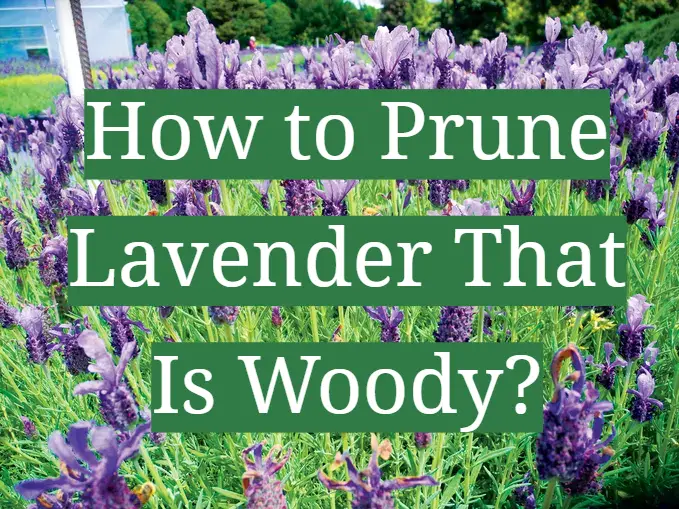




Leave a Reply
View Comments